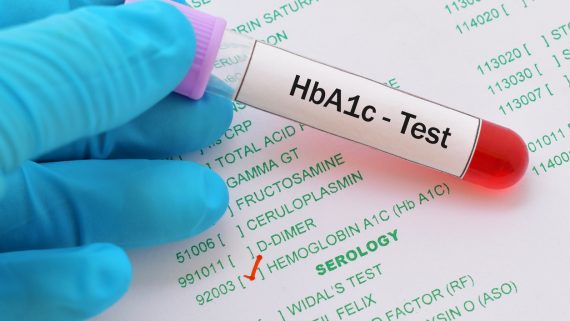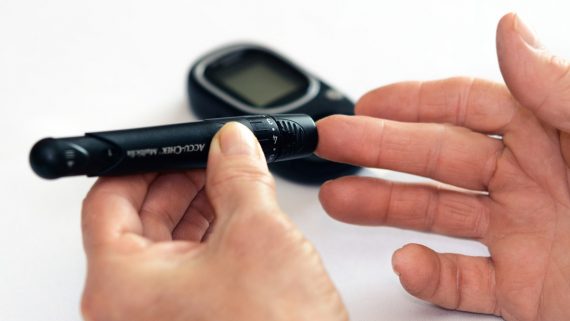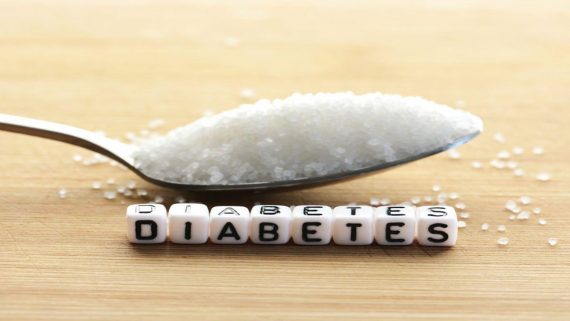What does HbA1c mean?
HbA1c is what’s known as glycated haemoglobin. This is something that’s made when the glucose (sugar) in your body sticks to your red blood cells. Your body can’t use the sugar properly, so more of it sticks to your blood cells and builds up in your blood. Red blood cells are active for around 2-3 months, which is why the reading is taken quarterly.
Too much sugar in the blood damages your blood vessels. This damage can lead to serious problems in parts of your body like your eyes and feet.
What is HbA1c?
HbA1c is your average blood glucose (sugar) levels for the last two to three months.
A high HbA1c means you have too much sugar in your blood. This means you’re more likely to develop diabetes complications, like serious problems with your eyes and feet.
Knowing your HbA1c level and what you can do to lower it will help you reduce your risk of devastating complications. This means getting your HbA1c checked regularly.
You’re entitled to get this test at least once a year. But if your HbA1c is high or needs a little more attention, it’ll be done every three to six months. Don’t skip it.
Once you know your HbA1c
The most common and confusing factors related to blood sugar levels is the normal, prediabetic and diabetic values. The fasting blood sugar/glucose levels are said to be normal if it is below 100mg/dl. Fasting blood sugar levels greater than 126mg/dl refers to Diabetes. Many people are confused regarding the values of the transitory phase. Between 101 to 125mg/dl it is known as impaired fasting glucose. Other than fasting blood sugar levels, Postprandial (after meal) sugar levels are also a key unit in monitoring blood glucose levels. If your postprandial blood sugar levels are less than 140mg/dl it is considered to be normal, if it is between 141 to 199mg/dl it indicates impaired glucose tolerance. Postprandial blood glucose levels more than 200mg/dl are a clear cut indication of Diabetes Mellitus. Now, both impaired fasting glucose and impaired glucose tolerance are together known as Prediabetes. That is these values indicate the prediabetic stage. During Pregnancy, it is desirable for women to keep their fasting sugar levels between 60 – 90mg/dl and Post Prandial levels between 90-120 mg/dl.
Blood Sugar level monitoring –
Blood glucose/ blood sugar level monitoring is critical to guide insulin, medication and behavioural adjustments with regards to
Glucose isn’t something as bad as it termed as. You may wonder what makes us claim that. But what needs to be known is Glucose is necessary for the body to run and function efficiently. Glucose is the charger, energizer and fuel that the body uses to carry out various internal and external activities. When we eat food, be it anything from a humble Banana to an expensive Mango, Carbohydrate is omnipresent. Carbohydrate is a complex structure formed of too many Glucose molecules. When these carbohydrates enter the body, they are broken down into Glucose by the various enzymes present in the body. Extra Glucose molecules are converted into glycogen and stored in the liver for further energy requirements.
The Glucose enters the cells of the body to provide the energy required for basic functioning. But when we are not eating enough, glycogen is reconverted to Glucose to meet the energy and vitality requirements of the organs. The hormone ‘Insulin’ paves the way for Glucose to enter into the blood cells. When Insulin is not released enough, the Glucose cannot enter the body and thus the levels of Glucose is increased in the blood stream. This presence of high amounts of Glucose in the bloodstream and over a period in the urine gives rise to ‘Hyperglycemia’, the condition further leading to Diabetes.



